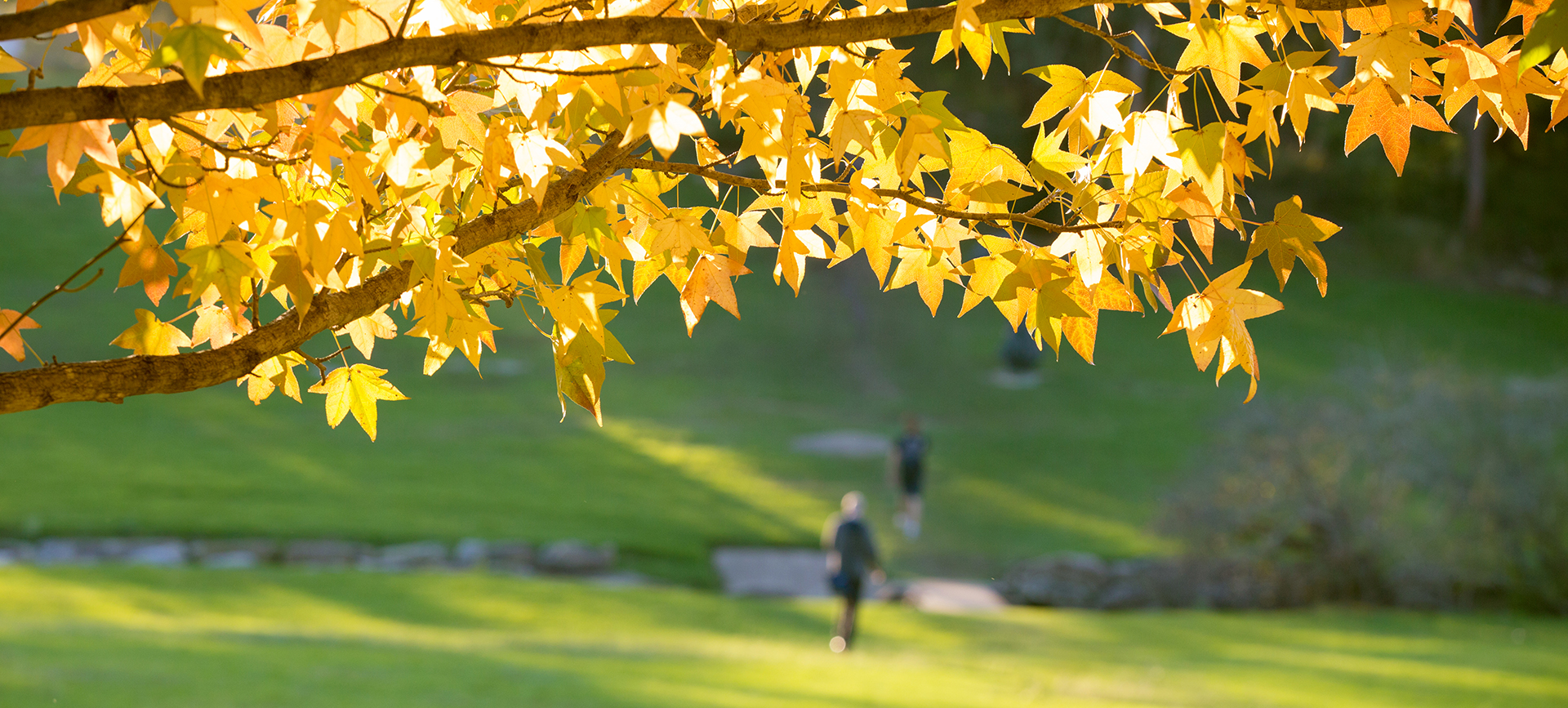Since the first landscape plantings in 1967, Macquarie University has been committed to the environment and creating a campus for future generations to enjoy. As part of our Campus Development plan, this commitment to our legacy flora and fauna strategy are at the forefront of every decision.
As we know there are many questions about our beautiful trees and the fauna that resides in them, we sat down with Mark Broomfield, Director of Property, and Leanne Denby, Director of Sustainability, to get some answers as to what is happening with our landscape as we make way for development.
I’m concerned about tree removals on campus. What can you tell me?
The biggest thing that we want everyone to know is that flora and fauna have been and will continue to be a strong feature of our campus. We certainly understand the concerns around tree removal and realise its importance to the University community. We’re on this journey together as we redevelop our campus, creating a world-class and sustainable University. We value our trees – they’re a part of what makes Macquarie unique and only remove those that are absolutely necessary.
Why do some trees have to be removed?
We understand the emotional connection our community has with our beautiful campus. We care about respecting this connection and the flora and fauna that resides here. As much as we may not want to see a tree cut down, sometimes it is unfortunately necessary.
Currently, some of the trees have reached the end of their life and must be taken down to protect our community from falling branches. Regardless of the upcoming works, these trees would still need to be removed. During the semester break, nine trees in the Central Courtyard and some located near the Arts building will be removed. It was decided to action this during the break to limit disturbance to our teaching staff and students.
What happens to trees that are removed?
We are always looking at ways that trees can be repurposed once they’ve reached the end of their life cycle on campus. We’re still working out all the details, but one example of this is how we’re working with Walanga Muru to repurpose trees for furniture and other structures on campus. This is something we’re really excited about and are looking forward to releasing more details shortly.
In general, what does the University do to maintain green spaces on campus?
The University takes pride in its beautiful green campus. Currently, we replant two trees for every one removed. We think about the longevity of the trees we choose and the fauna on campus who may use them.
To replenish trees that are damaged in storms or in decline, the University plants 50 locally native trees every year. In addition, since 2010, two hectares of bushland in and around the University Fauna Park have been under a program of assisted natural regeneration, which has resulted in hundreds of young trees coming up and reproductions of other ground and shrub layer species.
Our campus creeks have been replanted and naturalised with native vegetation at an enormous rate over recent years too. The wetland area behind Y3A is a wonderful example of this, as is the Bushcare@MQ site along Gymnasium Rd.
We’re committed to being open and transparent with communications and engaging with you as works progress. In the meantime, please email us at campusdevelopment@mq.edu.au anytime if you have questions or concerns.
Thanks for sitting down with us, Mark and Leanne! Do you have other questions for a future article? Let us know.


 Back to homepage
Back to homepage
Last Saturday morning, walking by the creek between the FBE building and the train station, I encountered a swamp wallaby. This was a delight to see. Was it an accident, or do we have a secret population on the campus — or do you think the dry weather has lured it out of the Lane Cove Park?
Wow, how exciting! That is the first time we’ve heard of them coming into the main campus. We have land adjoining Lane Cove National Park that they visit, but it’s quite a feat to cross under or over the freeway from there. If you see anymore please do let us know.
A question – I notice we have a small and stable population of ducks that seem to have made a home on campus. What can you tell us about them?
Thanks for your question. We all know and love the ducks that call our campus home. Specific to the native ducks – although you will have noticed they are reasonably tame around people, we don’t manage the local colony as a domestic (e.g. farmyard or backyard) bird but rather, consider them wildlife. Hand-feeding is not encouraged, as the species is adapted to surviving with the food resources it can find on creeks, estuaries and nearby habitats. The flocks will move and migrate reasonable distances over the course of a year. For example, this species is native to the entire South Pacific region as well as Australia. That movement means sometimes the campus has a very high population, and other times it is lower.
Any work that the University decides to do takes into account the ducks feeding patterns and habitat. In the past, specific management activities have been put in place prior to the commencement of any new work to accommodate the ducks.
Feel free to email us at campusdevelopment@mq.edu.au if you have any further questions.